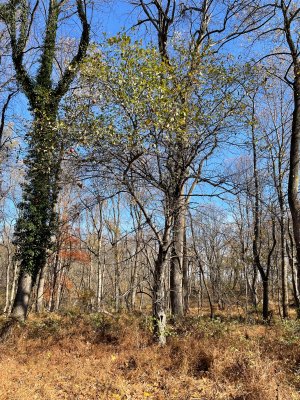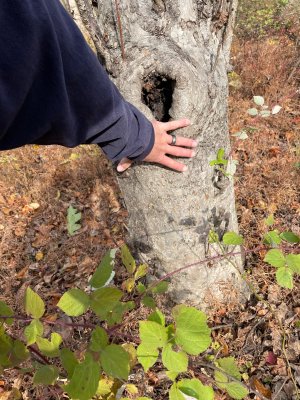Dan Maranto
Yearling... With promise
So a little back story, the property I now own, was once a large 125-ish acre apple orchard, 50+ years ago. It was split into 3 large lots (one being mine, and 2 others) and sold off over time. It has since grown up into mature woods. Talking to the neighbors whose family has lived here for almost a century is how I got most of that info. I found a satellite imagery of the property from (if I recall correctly) the 1930’s. I will have to find where I saved it and can post if anyone is interested.
I have been here a little over 10 years now and have always been on the look out for any “left over” apple trees, but no such luck.
Until today…I was looking at an oak tree along a clearing and something next to it happened to catch my eye….apples! I checked it out close up and used a “picture this” ap, and all it says is it’s apple tree. I didn’t see any on the ground, so something’s eating them, and there are a few left on the tree. I am not super knowledgeable in apple trees, but It appears to be an older tree. Approx 25’ tall.
The only problem is, it is on my neighbors property. I have permission to hunt there, but that’s not really why I’m here. I think it would be cool to be able to grow a few apple Trees from this tree, kind of like having a piece of history from the original homestead.
How could I go about doing this? I’m doing some researching on grafting, but it is super overwhelming.
Any tips or points in the right direction I would appreciate!
I have been here a little over 10 years now and have always been on the look out for any “left over” apple trees, but no such luck.
Until today…I was looking at an oak tree along a clearing and something next to it happened to catch my eye….apples! I checked it out close up and used a “picture this” ap, and all it says is it’s apple tree. I didn’t see any on the ground, so something’s eating them, and there are a few left on the tree. I am not super knowledgeable in apple trees, but It appears to be an older tree. Approx 25’ tall.
The only problem is, it is on my neighbors property. I have permission to hunt there, but that’s not really why I’m here. I think it would be cool to be able to grow a few apple Trees from this tree, kind of like having a piece of history from the original homestead.
How could I go about doing this? I’m doing some researching on grafting, but it is super overwhelming.
Any tips or points in the right direction I would appreciate!





